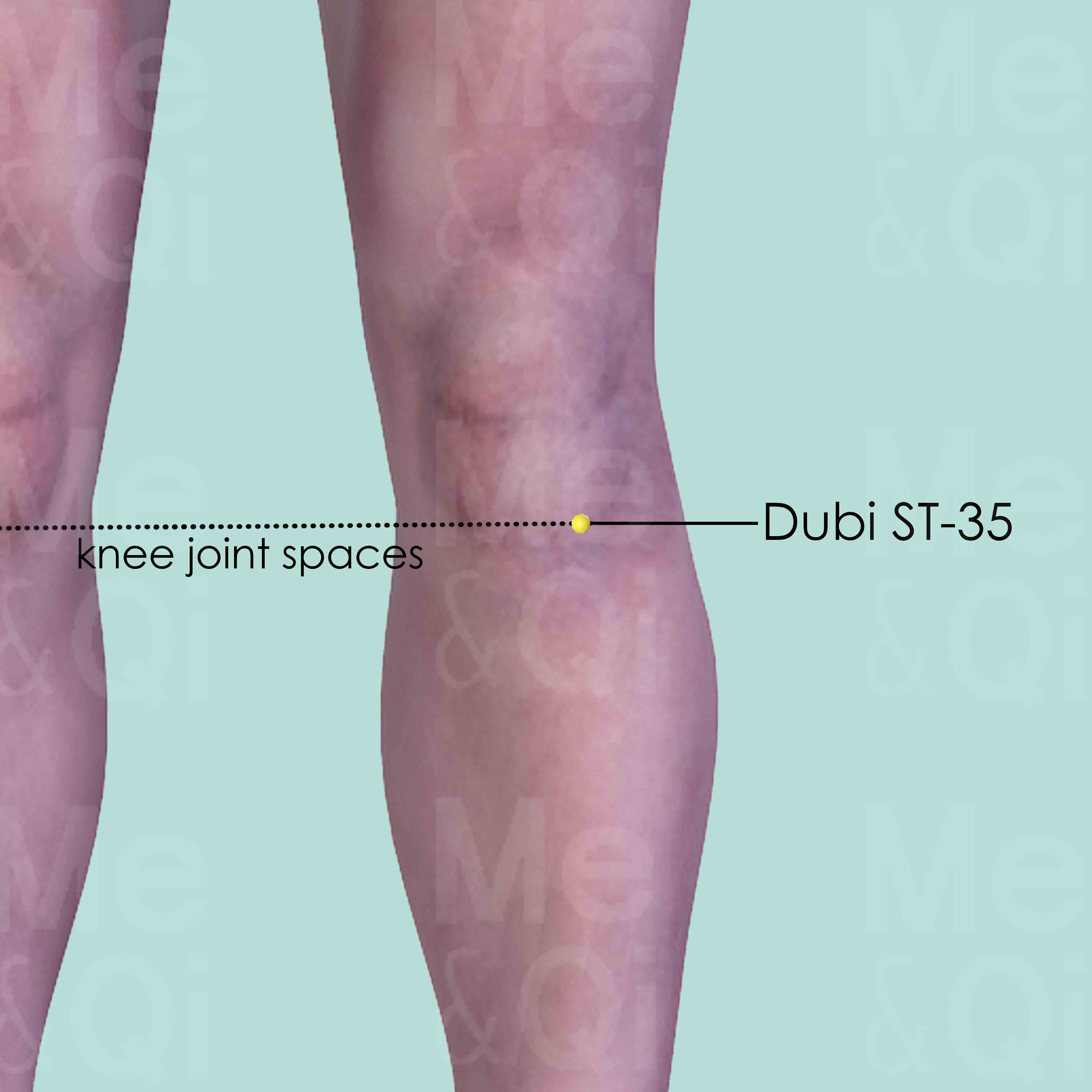Leg Numbnessaccording to TCM
Symptom family: Legs disorders and Symptoms
Sub-symptom(s): Lower Leg Numbness
What is Leg Numbness?
Leg numbness refers to a loss of sensation or a tingling feeling in the legs. This condition can range from mild and occasional to severe and chronic, potentially impacting an individual's ability to walk, maintain balance, or detect temperature changes. It's a symptom that may arise from various underlying issues, including nerve compression, poor circulation, or more systemic health problems like diabetes.
How Does TCM View Leg Numbness?
Traditional Chinese Medicine (TCM) approaches leg numbness as a sign of disharmony within the body's energy pathways. TCM theory suggests that numbness occurs when Qi (vital energy) and blood flow are obstructed or when there is an imbalance between the Yin and Yang energies.
Factors such as exposure to Cold Evil, internal Dampness, or a Deficiency in vital substances can lead to the stagnation that causes numbness. Treatment in TCM aims to restore the balance and flow of Qi and Blood, addressing the root cause of the numbness.
Acupoints for Leg Numbness
TCM advocates for the use of specific acupoints to alleviate leg numbness by enhancing Qi and blood circulation. The Stomach Channel, for instance, includes points like Biguan ST-31, located just below the anterior superior iliac spine, which is known for its ability to remove obstructions from the channel and expel wind and dampness, thus addressing the root causes of numbness.
Another valuable point, Tiaokou ST-38, found midway between the knee and the ankle, is particularly effective for expelling Wind-Damp and benefiting the shoulder, illustrating the interconnectedness of body parts in TCM. Additionally, the Gall Bladder Channel offers points like Fengshi GB-31, which is effective in expelling wind and removing channel obstructions, and Huantiao GB-30, crucial for resolving dampness and expelling wind, further showcasing TCM's holistic approach to treatment. By targeting these acupoints, TCM practitioners aim to stimulate the body's healing processes, restoring the natural flow of Qi and blood to relieve numbness in the legs.
Explore below some acupoints used to address leg numbness, organized by meridian.
- By Meridian
- Stomach Channel
- Gall Bladder Channel
- Extra Points: Lower Extremities (EX-LE)
- Bladder Channel
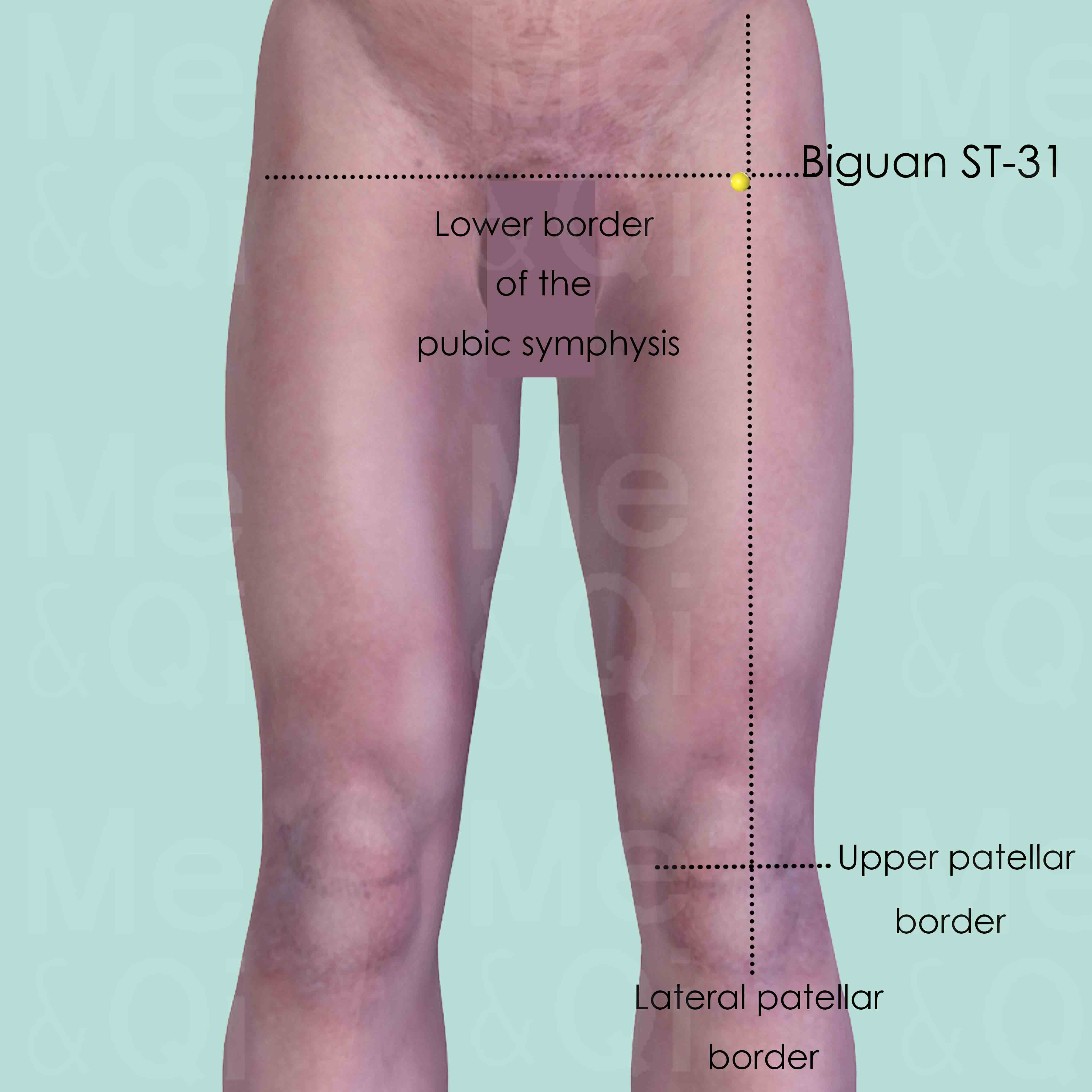
Biguan ST-31
Directly below the anterior superior iliac spine (ASIS), at the level of the lower border of the pubic symphysis, in the depression on the lateral side of sartorius muscle when the thigh is flex.
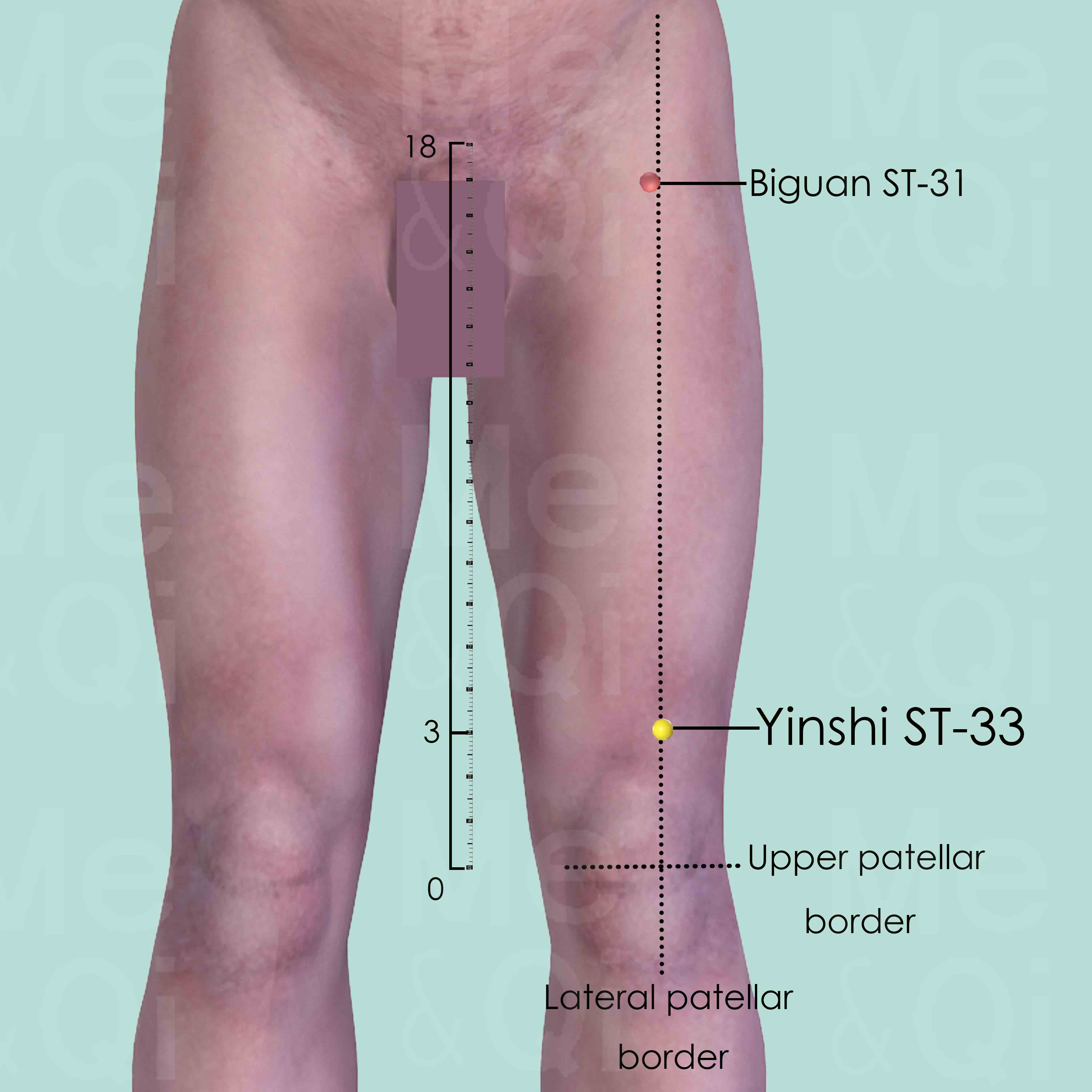
Yinshi ST-33
3 cun above the upper-lateral border of the patella, on a line between the lateral patellar border and the anterior superior iliac spine (ASIS).
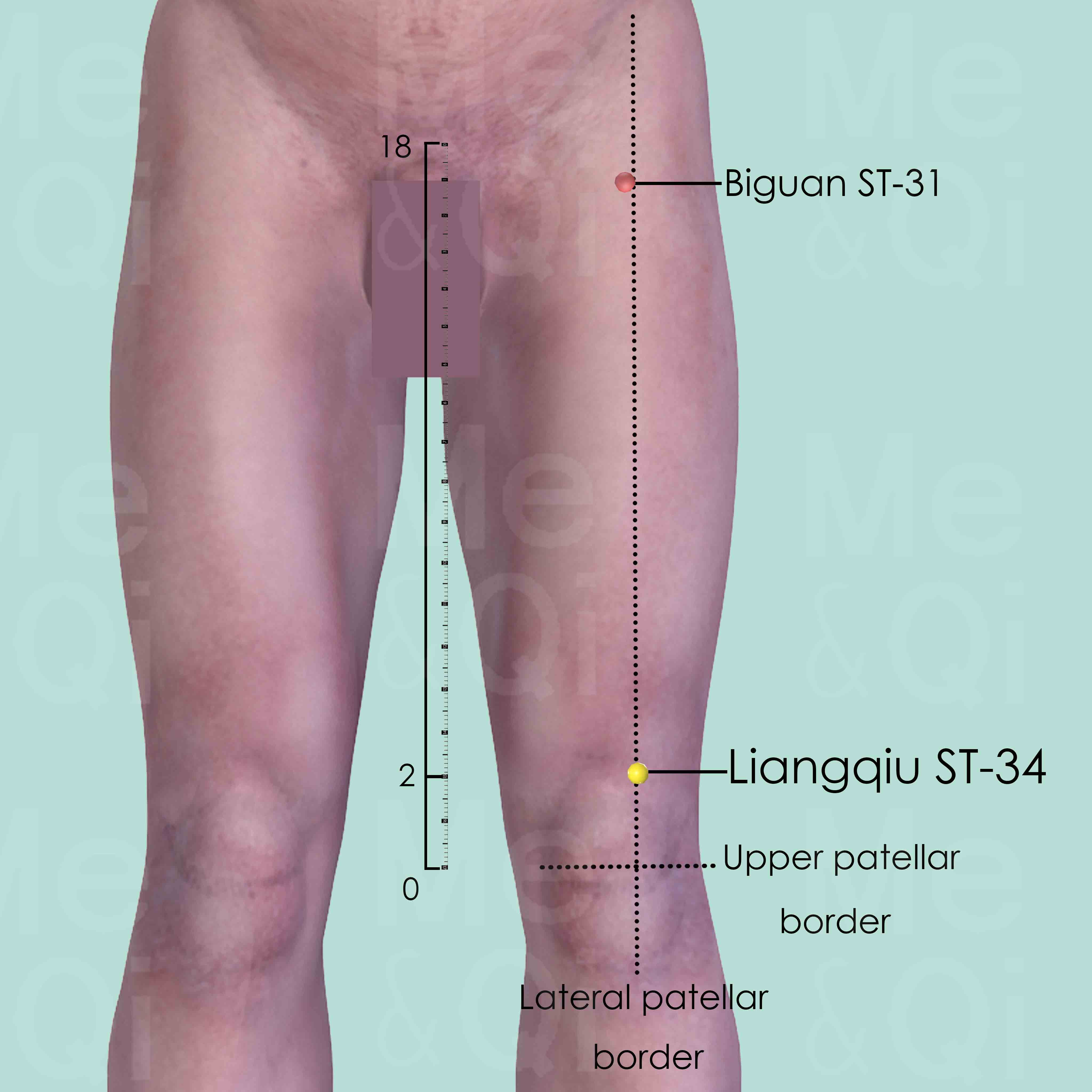
Liangqiu ST-34
2 cun above the upper-lateral border of the patella, on a line between the upper lateral patellar border and the anterior superior iliac spine (ASIS).
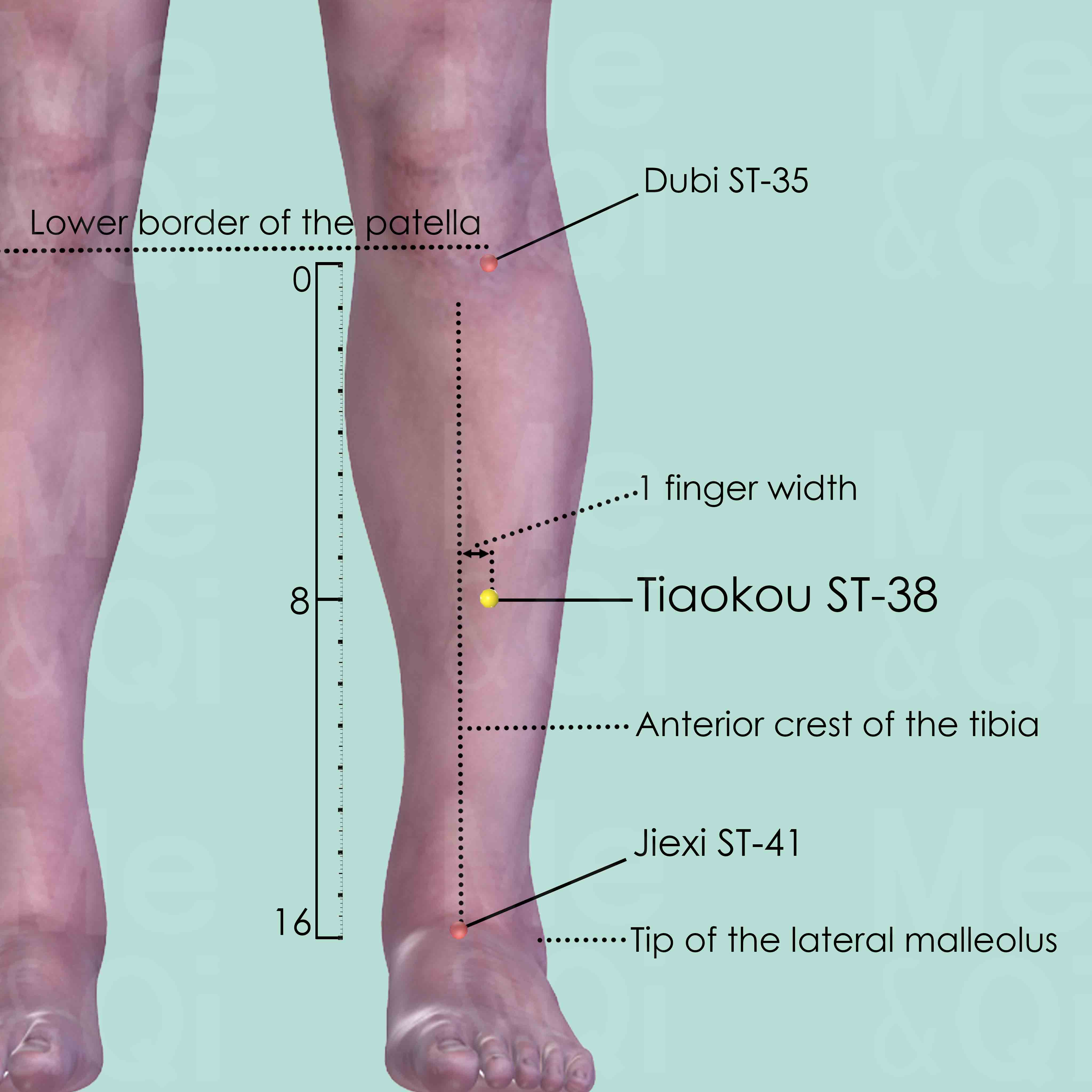
Tiaokou ST-38
8 cun below Dubi ST-35, midway between Dubi ST-35 and Jiexi ST-41, one middle finger-width from the anterior crest of the tibia.
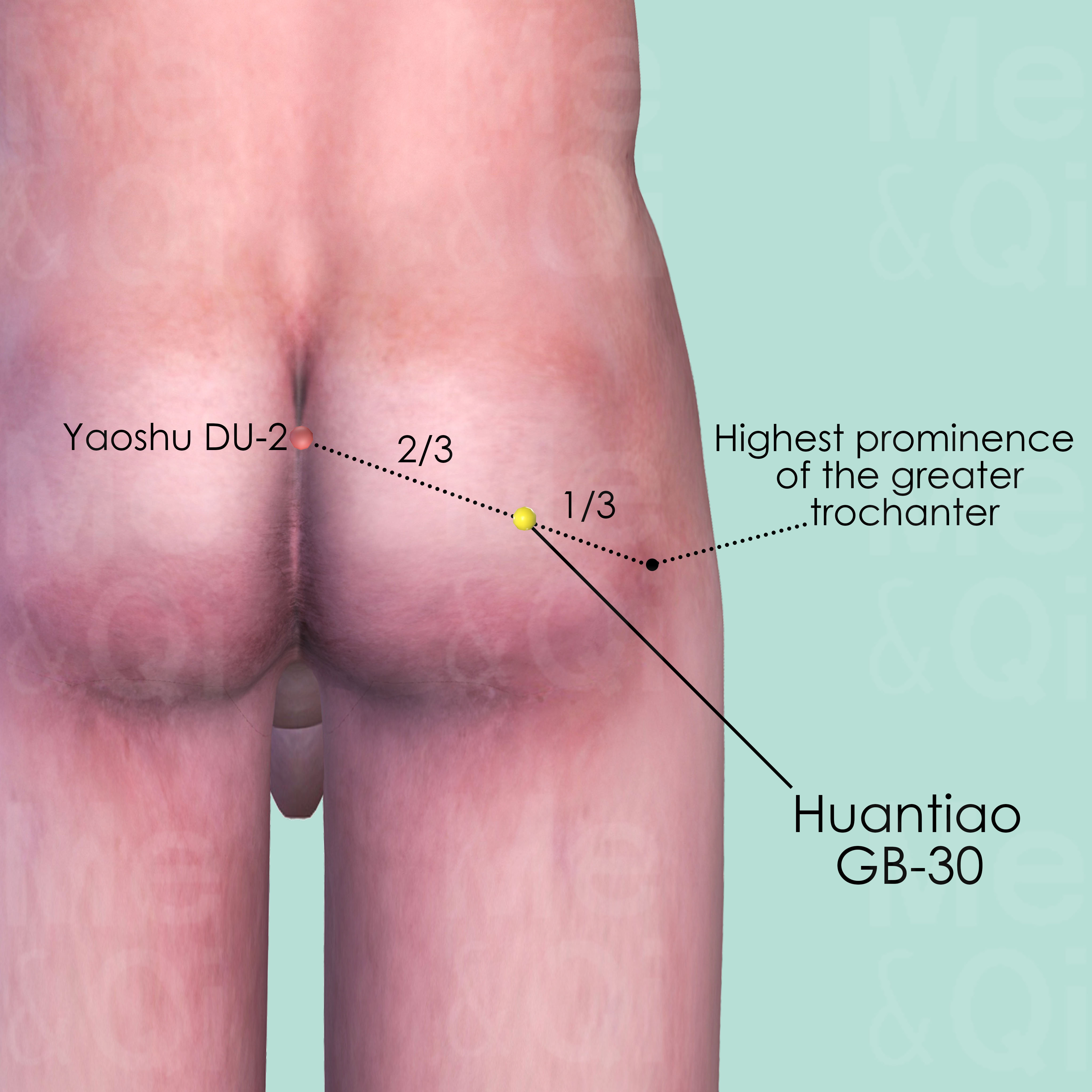
Huantiao GB-30
At the junction of the middle and lateral third of the distance between the great trochanter and Yaoshu DU-2 of the hiatus of the sacrum. When locating the point, put the patient in lateral recumbent position with the thigh flexed.
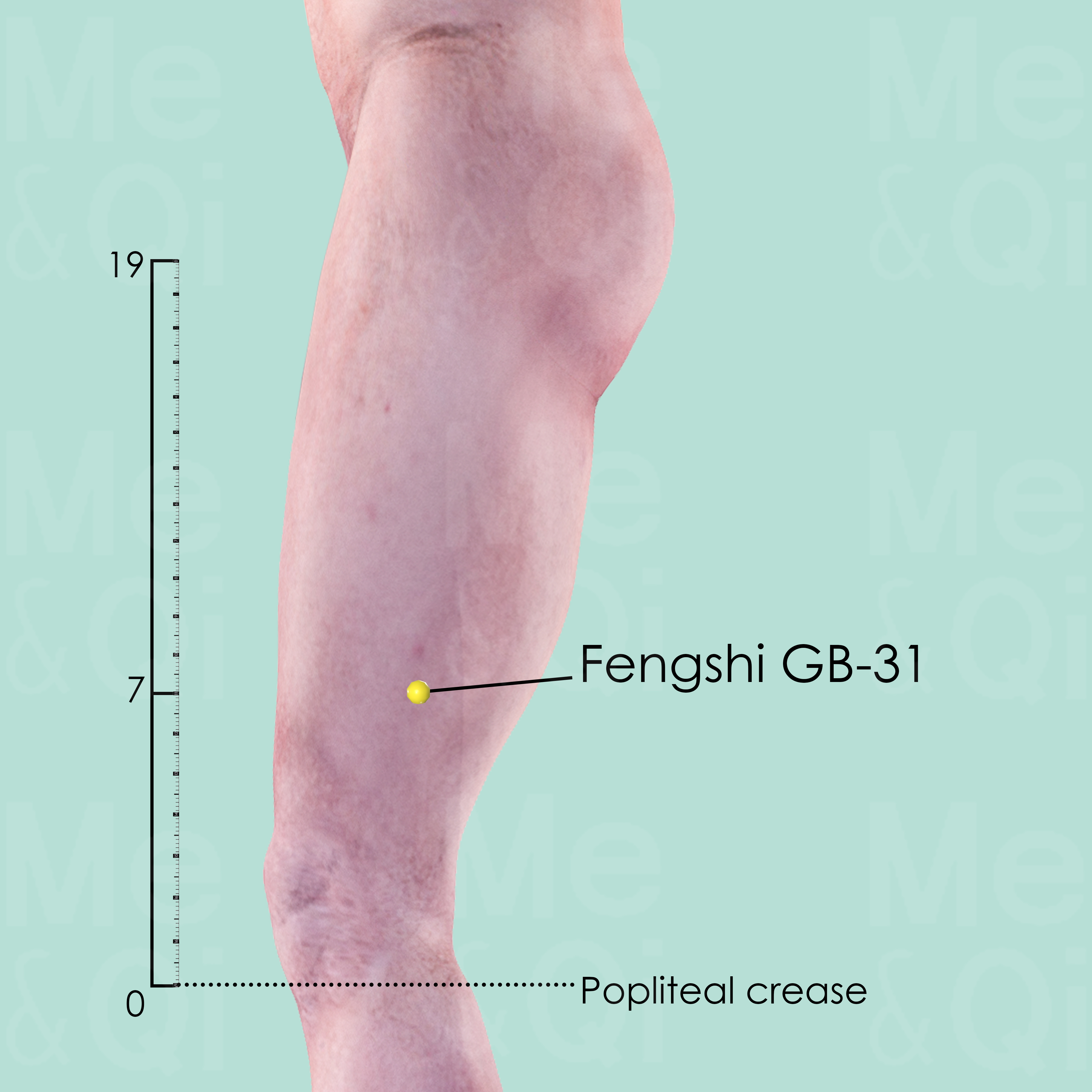
Fengshi GB-31
On the midline of the lateral aspect of the thigh, 7 cun above the transverse politeal crease.
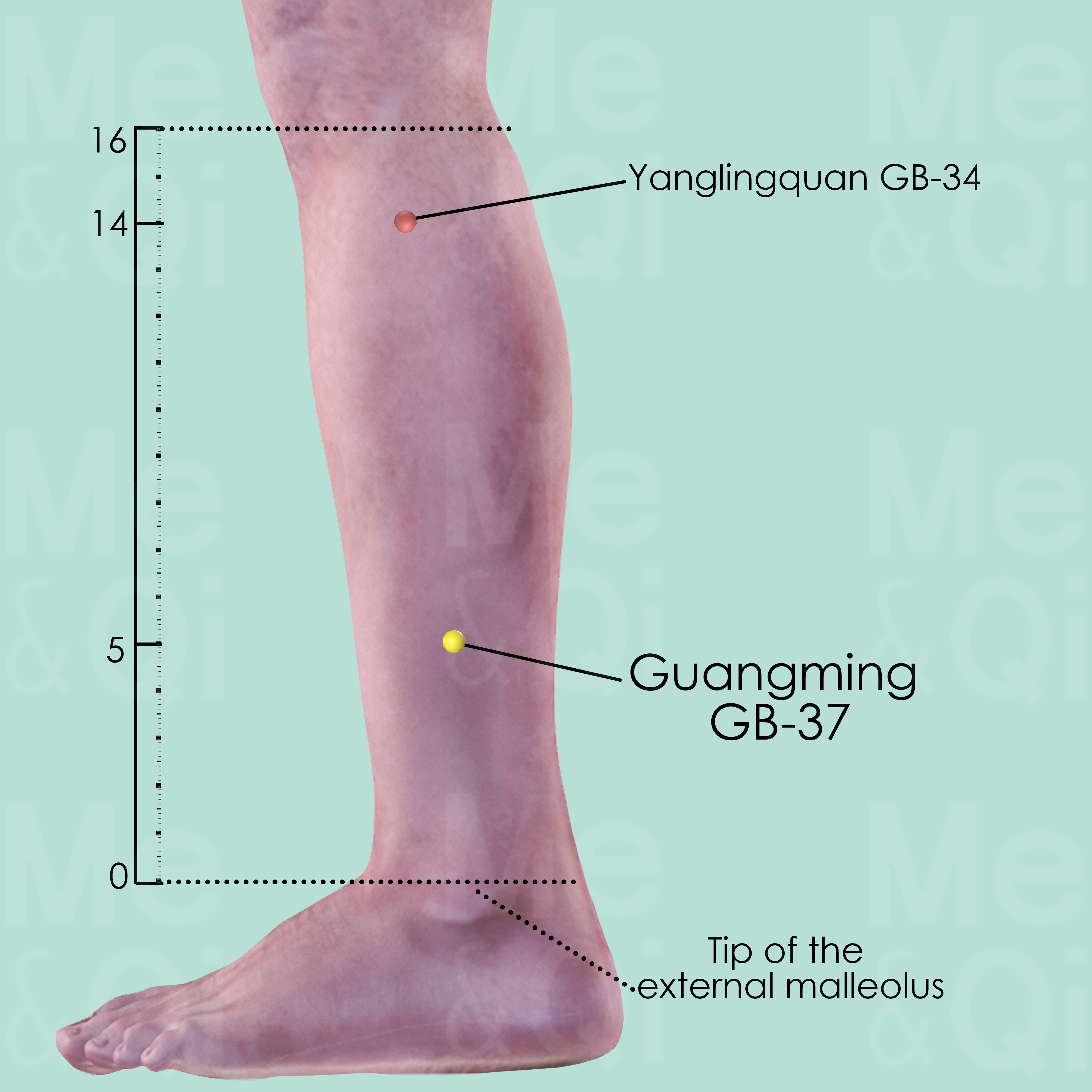
Guangming GB-37
5 cun directly above the tip of the external malleolus, on the anterior border of the fibula.
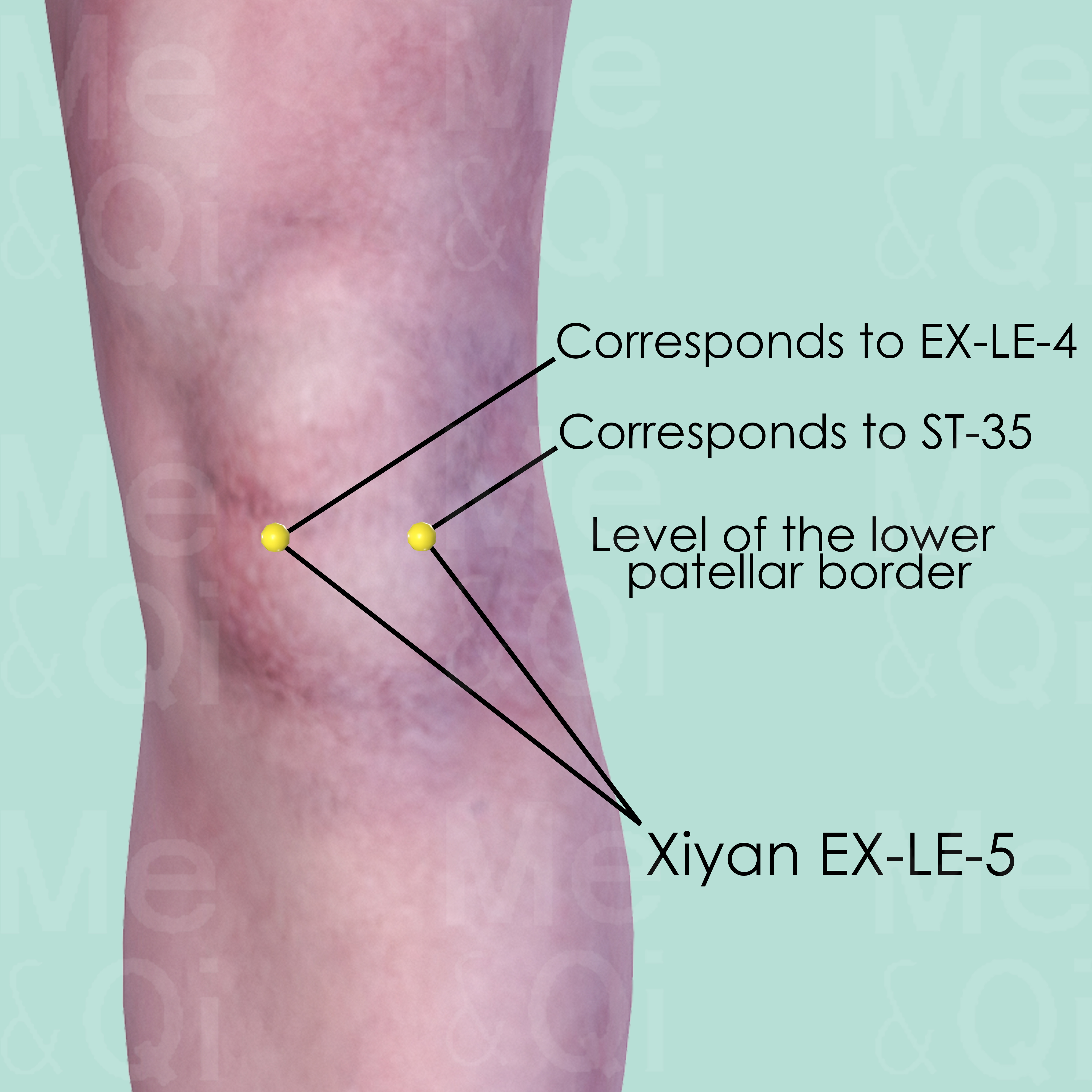
Xiyan EX-LE-5
This is a group of 2 points, composed of Dubi ST-35 and Neixiyan EX-LE-4. Both are located inferior to the patella, medial and lateral to the patellar ligament. Dubi ST-35 is the lateral one, while Neixiyan EX-LE-4 is the medial one.
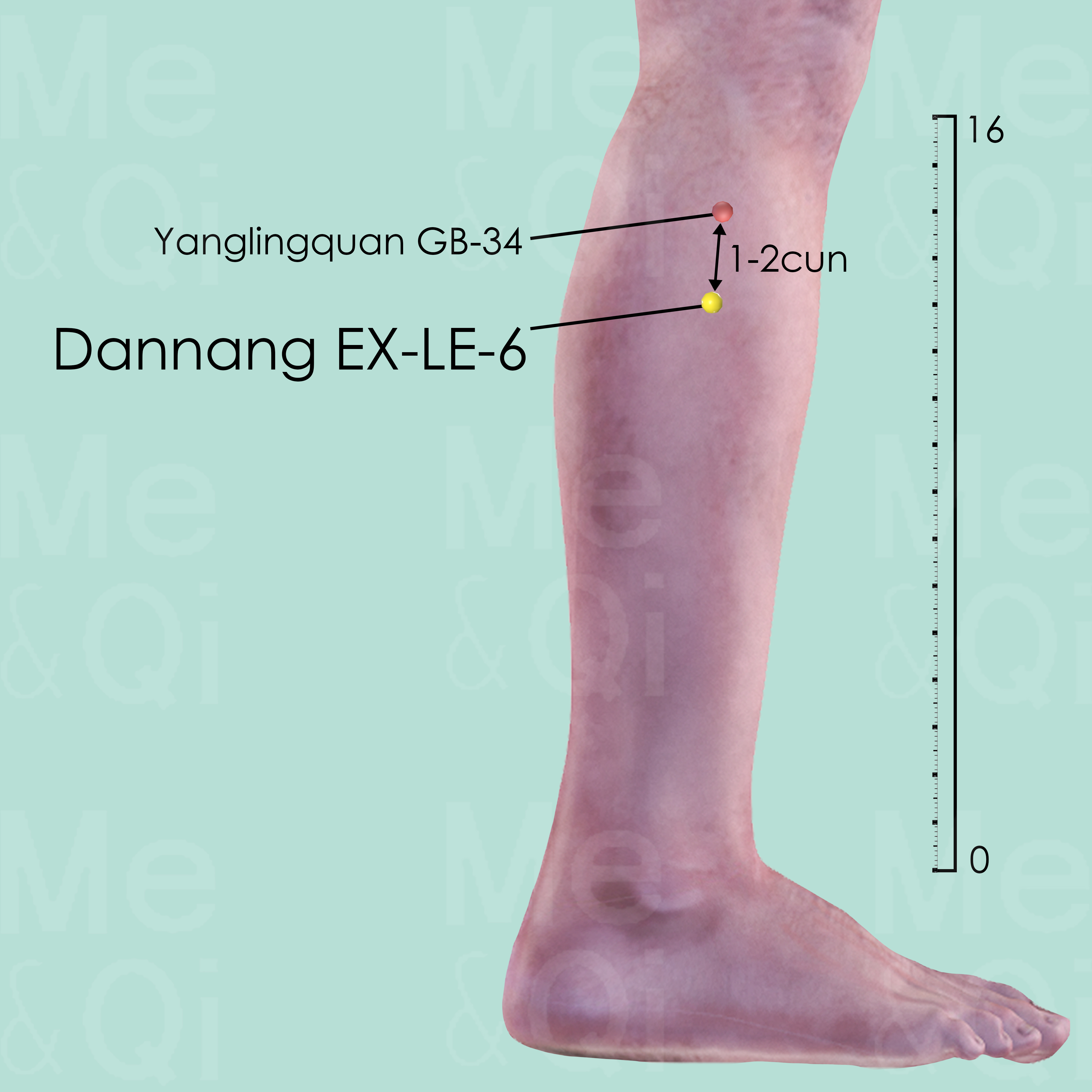
Dannang EX-LE-6
On the Gall Bladder Channel of the right leg, about 1-2 cun below Yanglingquan GB-34. Around there, palpate and locate Dannang EX-LE-6 at the most tender point.
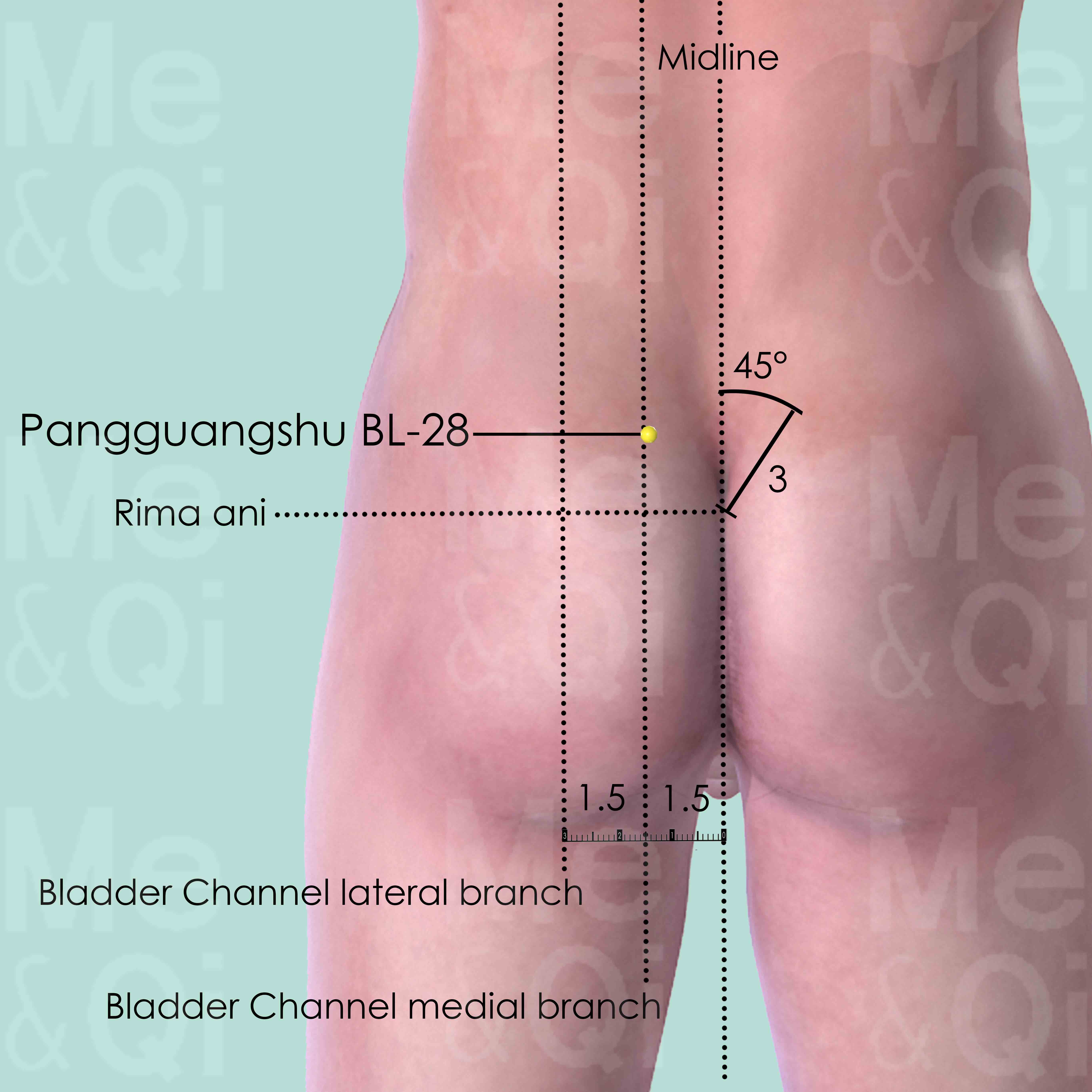
Pangguangshu BL-28
At the level of the 2nd posterior sacral foramen, 1.5 cun lateral to the posterior midline, in the depression between the medial border of the posterior superior iliac spine (PSIS) and the sacrum.

